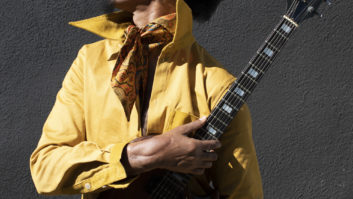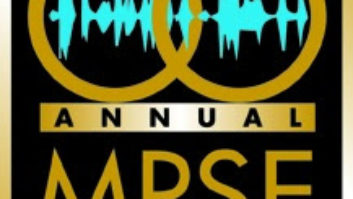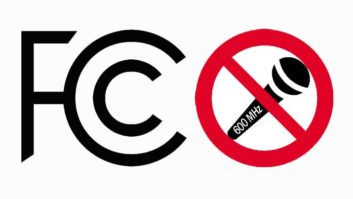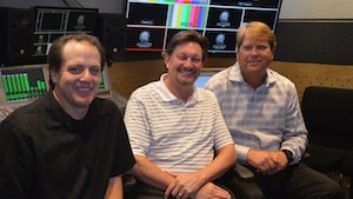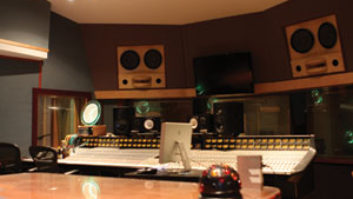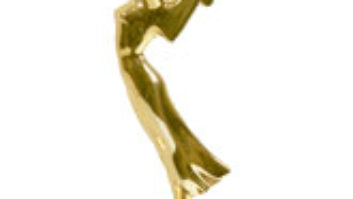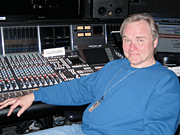
Grammy/Emmy Award–winning Jerry Garszva staffs one of the rooms.
M
arried With Children, The Simpsons, In Living Color, American Idol, The Shield, Nip/Tuck
— the Fox Television network long ago branded itself as the leader in edgy, exciting and attitude-laden primetime TV. It’s as true in sports as it is in entertainment, where Fox Sports is the go-to station for MLB, the NFL, NASCAR and just about anything in between. These are the folks who put mics on the Green Monster in Fenway, revolutionized hockey and made NASCAR the Number One spectator sport in America.
Supporting all of this out of the Fox Entertainment Group’s headquarters in the Century City area of Los Angeles is the Fox Networks Engineering & Operations unit, which provides all physical production, transmission and facilities activities to Fox Broadcasting Co., the more than 30 different Fox Cable Networks and Fox Sports. Outfitted with six 32-fader, 96-channel in-line Solid State Logic C200 digital production consoles, the FNE&O complex is, most weeks, a hotbed of activity.
The high-volume On-Air Promotion department creates hundreds of promos per week, using four C200s with Fairlight MFX editing systems. There are also three edit bays fitted with Pro Tools and ProControl that predominantly provide program material for Fox Sports.
Downstairs at Fox Sports, two mirror-image suites house C200s interfaced with Pro Tools. Grammy- and Emmy Award-winning mixer Jerry Garszva staffs one of the rooms; the other is helmed by Richie Becker. Several other engineers, including Jim Mitchell, Ed Golia, Julie Morgan, Fulton Dingley and Jay Hayes, also cover shifts.
Fox Television installed six 32-fader, 96 in-line channel Solid State Logic C200
digital production consoles to serve its on-air promotion and sports departments.
Four of the consoles are used for on-air promotion, replacing the SSL Scenaria
digital post-production mixing systems in use since 1992, and the remaining two
C200 consoles are used for Fox Sports projects.
photo: edward colver

“I mostly do promos for Fox Sports,” says Garszva, “but I also work on the production side — like for Super Bowl or when baseball playoffs overlap with football — when the schedule gets really crazy and the rooms are working around the clock.”
The facility’s heavy workload dictates a fair amount of job function crossover among the mixers. “Picture comes to us, we record the voice-overs and do the sound design,” Garszva explains. “We also do the music editing and sometimes even compose music. Everybody here is multitalented. On the production side, we have pretty free rein, sounds-wise. On the promo side, we work with the Fox Sports Promo creative directors, which involves learning what each of them likes to hear and servicing them as clients.
“We do a really wide range of stuff,” he continues. “For certain key games, like the Super Bowl, we’ll do the whole package [everything that isn’t live action], with pieces that run from 30 seconds to four minutes, like mini-features on a player, Super Bowl memories, et cetera. Then we’ll do regional spots that ship out to affiliates. We also do long-format shows that run 60 to 90 minutes on everything from ice skating to poker and golf.”
Although Fox has a half-terabyte of sound effects available from its online library, location recording is sometimes still required. “We recorded a number of sound effects for the NASCAR shows by going out on location to race tracks around the country,” comments mixer Becker. “We also use Foley elements because our producers prefer real rather than archival sounds.”
In addition to promos, Becker handles direct-to-live broadcasts, providing live sweetening during basketball and football events; for example, sound effects that accompany a graphic moving across the screen. “I have access to samplers, plus an [Apple PowerBook] laptop and an effects library,” he says. “I need to be able to locate each sound quickly, using Pro Tools as my sound source. I just drag and drop what I need to assigned keys on the keyboard and mix as I go.”
Sixty-four digital I/Os interface Pro Tools and the C200s, with Pro Tools being used, in general, says Garszva, “exactly like a multitrack, except we also edit on it and use some plug-ins where appropriate. For the most part, we do mixing on the console.”
The staff is highly experienced with digital consoles: Prior to the installation of the C200s the facility housed, for 10 years, SSL Scenarias. A preference that developed over that time, Garszva notes, is for in-line, hands-on pots to operate specific functions, rather than layered, multiple functions that share a single display.
Pictured (L-R): mixers Andy Harper, Gary Singleman and Matt Wellentin
photo: edward colver

“For its day, the Scenarias were fabulous,” he notes. “They worked great and took a real beating from us for well over 10 years. But a real improvement with the C200s is that instead of having multiple EQs and dynamics assigned by one channel, where you are always swapping things around, they have all the knobs. I’m a technically minded guy; at the time, like everyone else, I bought into the idea that we didn’t need all those knobs. But now, I firmly believe, for real speed and efficiency, you do.
“This is the first digital console that I’ve sat down at and felt immediately at home,” Garszva continues. “The EQ sounds phenomenal, the dynamics are spectacular and it has very few — if any — artifacts. It totally does what it’s supposed to without getting in the way. In this situation, where everything is last minute and down to the wire, you’ve got to be able to work really quickly without mistakes. We looked at a lot of different consoles. From a layout and ergonomic standpoint, the C200 was the best.”
Thirty-two faders, a mixture of stereo and mono, are housed in five buckets, formatted to follow a template also used in the Pro Tools system. Although C200 software can manage up to 128 inputs, Garszva says that many aren’t required at Fox Sports. “The nature of this work is so fast,” he points out, “that you can’t deal with a lot of individual elements. You’ve got to condense it down as much as you can before you mix.”
Monitoring throughout the facility is by Westlake — large BBSM-12s and small BBSM-4s — which, Garszva says, “translate well to small and large TVs.” Other gear in the Fox Sports control rooms includes a Manley limiter used on voice-overs, a TC Electronic 6000 and, at the end of the mix chain, a [Waves] L2. “We have strict rules as to our peak levels, so we use the L2 basically as a brick wall,” Garszva comments. “It’s got to sound very loud, but short-term peaks can’t go above -6. We use the SSL’s onboard quad bus compressor to control our average levels, which are restricted to +2VU average.”
Although most promos are currently mixed in conventional stereo, within the year, both Garszva and Becker expect to be mixing in Dolby Surround with 5.1-channel projects. Surround capability was another appealing feature of the C200. “We did a theatrical promo for Fox International with a 5.1 mix,” Becker notes. “I used the C200 to prepare templates [in surround] and the process was easy with this console.”
From Super Bowl to NASCAR, then on to the Daytona 500: “Deadlines are crazy, but in 11 years, we haven’t missed air yet,” concludes Garszva with a laugh. “But we’ve come mighty close, to where someone takes the program material out of the recorder, runs down the hall, slams it into another machine and it’s on the air. That’s when it gets nerve-wracking!”
Maureen Droney is
Mix’
s L.A. editor
.
